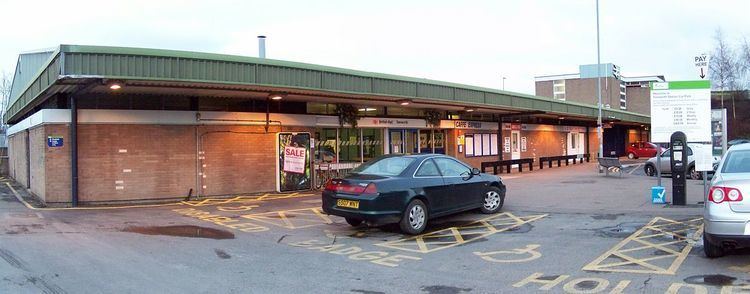Station code TAM DfT category C2 Number of platforms 4 | Grid reference SK213044 2011/12 0.953 million | |
 | ||
Address Tamworth B79 7JT, United Kingdom Similar Lichfield Trent Valley rail, Lichfield City railway station, Erdington railway station, Derby railway station, Polesworth railway station | ||
Tamworth railway station 16 1 2017
Tamworth is a split-level railway station which serves the town of Tamworth in Staffordshire, England. It is located where the Cross Country Route passes over the Trent Valley section of the West Coast Main Line, in the United Kingdom, although there is no longer a rail link between the two lines.
Contents
- Tamworth railway station 16 1 2017
- Tamworth railway station 26 10 2015
- History
- Accidents and incidents
- Layout
- London Midland
- Virgin Trains
- High level
- References
Tamworth railway station 26 10 2015
History
The original station was opened on 12 August 1839 by the Birmingham and Derby Junction Railway on its original route from Derby to Hampton-in-Arden meeting the London and Birmingham Railway for London
On 26 June 1847 the London and North Western Railway opened its Trent Valley Line passing beneath the original line with a new joint station designed by John William Livock.
The joint station didn't acquire the "High Level" and "Low Level" names until 1924. Since it was expected that only local trains would call, the platforms were on loops, with the running lines left clear for expresses. At that time there was a north to west curve linking the, by then, Midland with the LNWR line. Since it was the crossing of two major lines – one Bristol to Newcastle, the other Euston to Aberdeen – it was important for the Royal Mail transferring upwards of 2000 bags every night.
A north to east curve was also built very early on by the Trent Valley Railway and the Birmingham & Derby Junction railway, and track was laid on it, but it is not known whether it was ever used. It was certainly lifted by the turn of the century. The track left the Trent Valley line and climbed on an embankment until it crossed the River Anker via a bridge, then entered a cutting until reaching the Midland line. The bridge, known locally as the Spider Bridge, was demolished sometime during the late 1960s by the Royal Engineers, and the cutting was filled in shortly afterwards, so there is little to see nowadays except for the vegetation-covered embankment leading to the bridge.
Prior to the introduction of diesel engines, Tamworth Railway Station was particularly well known to 'train spotting' enthusiasts as the closest station to Birmingham at which the larger and faster steam engines could be seen on the London to the North West Coast Line. The south-east corner, where the lines crossed, was at that time a vacant field, and used to be filled with spotters who would bring refreshments and spend the whole day there. A housing estate now occupies that spot.
There was a large water tower and pumping station at the east end of the low level, pumping water from the River Anker below.
The original station was demolished in 1961 and the rebuilt station opened in 1962 and at the same time the Trent Valley Line was electrified, requiring the High level line and platforms to be raised by two feet.
Accidents and incidents
Layout
There are four platforms:
London Midland
London Midland operates a regular Monday to Sunday semi-fast hourly service between London and Crewe via Stoke-on-Trent which calls at Tamworth. This service uses Class 350 multiple units. Some peak services start or terminate at Northampton.
Virgin Trains
Virgin Trains provide additional services during the peak hours and weekends. Westbound, there are:
Eastbound, there are:
All Virgin Trains services are operated by Class 390 Pendolinos.
Grand Central has been given permission to run 6 trains a day from London to Blackpool North from 2018, with conditional permission for a stop at Tamworth dependent upon future capacity after infrastructural work.
High level
On the Cross Country Route all trains are served by CrossCountry and operated by Class 170, 220s, 221s and HST sets.
Northbound, the typical Monday-Saturday frequency of services is as follows:
On Sundays this is reduced to 1 train per hour to Nottingham and 1 train per 2 hours to Glasgow.
Southbound, the typical Monday-Saturday frequency of services is as follows:
On Sundays the hourly service to Birmingham does not operate.
There is also a small number of trains between Newcastle and Reading or Southampton Central which stop at Tamworth.
